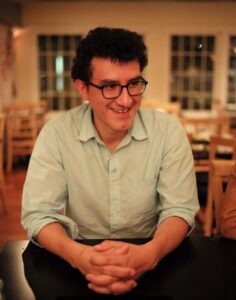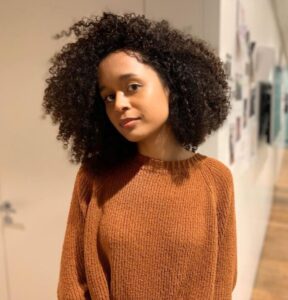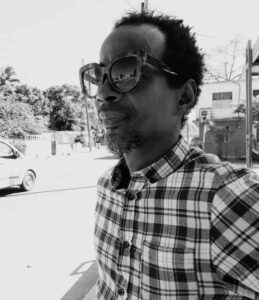This is part one of an article addressing racism and the coverage of racial violence in Latin American newsrooms. Click here to read part two.
In recent months, news headlines from Cuba to Brazil highlight the murders of Black and Indigenous men and youth, placing them in the context of a notorious case that had global repercussions. The similarities and differences between their murders and the killing of George Floyd at the hands of police in the U.S. sparked conversations regarding the lack of diversity in Latin American newsrooms and how crimes committed against Black and Indigenous peoples are covered in the region.
According to some media professionals, coverage does not address racism as a structural and institutional problem, but an individual one. They even explained that the state-driven ideology that everyone is "mestizo" contributes to the way journalists cover their region and racialized communities.
LatAm Journalism Review interviewed three journalists to talk about how newsrooms and reporters are questioning and analyzing the issue.
How the ideology of mestizaje impacts journalism and newsrooms
In Latin America, explained Marco Avilés, journalist and doctoral student at the University of Pennsylvania, there was a lot of media coverage not only of Floyd’s murder but also of the protests that followed. During an interview with LJR in June, Avilés said some media have turned to experts and anthropologists to address how racism manifests itself in their own countries.

Marco Avilés, journalist and consultant in issues of racism and diversity. Photo by Ann S. Kim. Courtesy
Avilés, author of the books “No soy tu cholo” (I am not your cholo) and “De dónde venimos los cholos” (Where do we cholos come from), is one of those experts who was interviewed several times by Latin American media to speak on the subject. He shared that program hosts and reporters were "horrified by this evidence" that a white police officer killed a Black citizen in the United States. However, he pointed out, despite the fact that the racist discourse is strong in the politics of the region, in Latin America, mass media do not address State violence against racialized communities as a result of the racist system.
"The question that has begun to arise is, if our media can be horrified and react to this racist violence in the United States, what happens in Latin America when States, local governments, also react against Indigenous populations? What is preventing us from finding the horror in what happens locally?” he asked.
A very strong idea that prevents people from being horrified, the reflection of diversity and the lack of representation in newsrooms, explained Avilés, is the myth promoted by the republics that everyone is mestizo, a mixture of European, Indigenous and Black. This myth leads to the conclusion that everyone is the same and that what happens is not racism, but classism. And, although in the United States there are campaigns to diversify newsrooms, in Latin America the ideology of mestizaje means that “there is no need to diversify something that is already diversified,” thus denying that racism exists in a certain country, he said.
Talking about diversity in the media is still a taboo subject, he added. When the journalist considers himself mestizo, he explained, it leads to the invisibility of Indigenous and Afro-descendant communities that are considered "like a sphere of alien reality.”
“If we want to incorporate Indigenous voices, we journalists must dare to deconstruct ourselves and see our voices not necessarily as mestizo. It will be a very long process, but necessary and inevitable,” Avilés said.
Because legacy news organizations have not traditionally included Black and Indigenous voices in newsrooms and as sources, Avilés said, these media have had to seek outside talent and columnists to speak on the issue. But, he clarified, the work must be more proactive than including voices from racialized communities. Media companies must also hire and invest in their employees’ careers.
“It is necessary to include these communities, not in a way to give color to the newsrooms, but to include them so that they can prosper within our newsrooms,'' Avilés said. “These voices must be empowered. Not only do we need to hire Afro and Indigenous writers. We need editors, editors-in-chief, producers of Indigenous and African descent. We need to empower these people."
Brazil: Diversity in newsrooms
The case of Floyd’s murder was a watershed moment for media in Brazil, journalist Yasmin Santos told LJR in July, because it opened the space for researchers and scientists to talk about the structural problem of racism. However, obvious mistakes were also made, as was the case with GloboNews in Brazil, which had an entire panel of white men talking about racism issues. After criticism on social networks, GloboNews acknowledged its mistake, something that is not commonly seen from media outlets, Santos said.
The outlet aired another special, this time with an entire panel of Black reporters. “The program started to talk about their stories, their personal stories, and the structure and the political problem were lost because we still have a hard time talking about it,” Santos said. “And I do not think that it's a problem of our Black journalists. I think that it was that the program was thought to talk about their personal stories.”

Journalist Yasmin Santos. Courtesy
When talking about diversity in newsrooms, Santos said one must remember that Black people in Brazil are a social minority in regard to representation in media, but not a minority within the population, since they constitute more than 50 percent of the latter. However, this is not reflected in media, which she says have taken "small steps" in speaking about racism, but speak about it as an individual issue, not as a systemic one.
In 2019, Santos published an article for the magazine piauí about her investigation of representation in newsrooms and the experiences of Afro-Brazilian journalists in media. She also wrote about her own experience of learning that she was the first Black woman to be hired at piauí in 2015.
“It wasn't exactly what a Black person expects from a dream job. It frustrated me and it still frustrates me,” she wrote in the essay.
Santos said the journalists interviewed for her investigation spoke of racism, discrimination, the hypersexualization of women and the loneliness of being the only Black reporter on the team. There is a lot of damage, Santos said, and there is also a psychological impact. She added that the journalists also spoke about the positive things that happened in their careers, like being a perfectionist at work. However, she explained the latter comes from having to be twice as good as their white colleagues or because they are punished worse than their counterparts at work when making a mistake.
When media executives talk about diversity they use it more as a word that has become popular to say, as a marketing tool without any in-depth commitment to changing structures within the company, Santos said.
“They say, I support diversity, and what I am saying is that they don't. Because to do that we have to change. We have to open newsrooms to different journalists, and the newsrooms are starting to do that but they start with interns, for instance, but they are not prepared to talk about any leadership in this kind of power position -- the position where we can make some real change in the media,” she said.
Media have to question whether they really value their Afro-Brazilian colleagues, she said, especially when it can be shocking for an intern to walk in and see that a Black journalist who has worked for 20 years in the newsroom has not been promoted. This is a structural change that also requires investment and time. It is not a problem that is solved in a few months or a year, she said, but it seems the media wants to find an immediate solution.
“I think we will need more weeks, months to see how we (media) are changing. If this is something rhetorical, if this is something for appearances, or if this is something we really want to change and fight to change, we need more time to evaluate that,” she said.
Cuba: How official and independent press approach the issue of racism
After Floyd's murder, the Cuban press wrote articles about what happened, but the manifestation was different between the official press and the independent press. The official press, independent Cuban journalist Jorge Enrique Rodríguez told LJR, spoke about the issue as a problem specific to the United States, without addressing the systems of racism, power structures and criminalization of mostly racialized people on the island. Meanwhile, he added, the independent press touches on the issue of racism, but not with the "depth and the punctuality that is needed."

Independent journalist Jorge Enrique Rodríguez. Photo from Diario de Cuba. Courtesy.
“That is one of the things that both the independent press and the official press suffer from and, in this case, it would be necessary to say … how it is something that has been dragging on, something that is implicit by the educational system. I understand it is not easy to get rid of after 60 years of doctrine of the educational system,” Rodríguez said.
After the murder of the young Afro-Cuban Hansel Hernández by police in the municipality of Guanabacoa, Cuba, on June 24, some media named the case the “Cuban George Floyd.” However, Rodríguez said he avoided doing this due to the different characteristics of the countries where the two were killed. In Cuba, the journalist said, it must be taken into account that racism is institutional and State policy -- that there is a criminalization of journalists and that there is a difference between the narrative of the official and independent press on how they cover these issues.
After Hernández's murder, a mobilization was called for the end of June and Rodríguez was among the journalists who criticized authorities on social media. On June 28, Rodríguez was detained after recording an incident of excessive police force when they separated two young men who were fighting. He was accused of inciting violence against the police, desacato (disobedience) and resisting arrest, among other charges. All this, Rodríguez said, was an invention and a lie.
According to the journalist, although it does not dominate covers of independent media, there have been constant discussions and coverage of racism and the power structure of the regime, which are mostly white people, by independent journalists, sectors of civil society and activists dating back more than 25 years ago. This, of course, is in contrast to official coverage, he said.
“Independent journalism in Cuba by default has to cover what the official [media] have not covered in 60 years. Almost like it's a ‘nice obligation,’” he said.